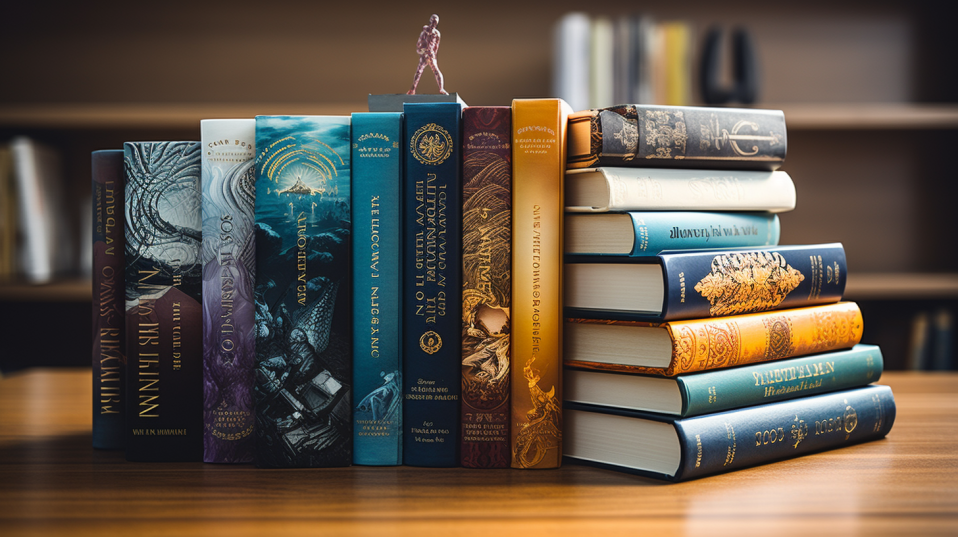Self-publishing physical books has become more accessible and rewarding than ever before, thanks to platforms like CreateSpace, which has now been seamlessly integrated into Kindle Direct Publishing (KDP). These platforms empower authors, artists, and niche publishers to bring their literary works to life and distribute them to a global audience. In this subchapter, we will explore the self-publishing journey for physical books through CreateSpace (KDP), providing you with a step-by-step guide to transform your manuscript into a professionally printed book.

The Power of Self-publishing
Before we dive into the specifics of self-publishing physical books through CreateSpace (KDP), it’s important to understand the profound impact this approach has had on the publishing landscape:
1. Empowerment of Creators
- Self-publishing empowers authors, artists, and niche creators to take control of their creative works and reach readers worldwide.
- It eliminates traditional gatekeepers and offers creative independence.
2. Accessibility and Global Reach
- Online platforms like CreateSpace (KDP) make self-publishing accessible to anyone with a story to tell or knowledge to share.
- Geographical barriers no longer hinder your ability to reach a global audience.
3. Diverse Genres and Niches
- Self-publishing allows for the exploration of diverse genres and niche topics that might not be commercially viable through traditional publishing houses.
- Creators can cater to specific, passionate audiences.
Why Choose CreateSpace (KDP) for Self-publishing
CreateSpace, which has now been integrated into Kindle Direct Publishing (KDP), is a popular choice for self-publishing physical books. Here’s why you might consider it as your self-publishing platform:
1. Amazon’s Vast Marketplace
- CreateSpace (KDP) connects your physical books directly to Amazon’s vast online marketplace, giving you access to millions of potential customers.
- Amazon’s global presence ensures wide distribution.
2. Print-on-Demand (POD) Technology
- CreateSpace (KDP) utilizes print-on-demand technology, which means books are printed as orders are received.
- This eliminates the need for large print runs and warehousing, saving you money.
3. Ease of Use
- CreateSpace (KDP) offers user-friendly tools and templates for formatting your book’s interior and designing your cover.
- Even authors with limited design experience can create professional-quality books.
4. Author Control
- Self-publishers retain full control over their works, including pricing, distribution, and cover design.
- You make all the decisions regarding your book.
5. Competitive Royalties
- CreateSpace (KDP) provides competitive royalties for authors and creators.
- You earn a percentage of the list price for each sale, which can be higher than traditional publishing contracts.
Preparing Your Manuscript
Before embarking on your self-publishing journey with CreateSpace (KDP), it’s crucial to ensure that your manuscript is ready for publication. Here are the essential steps to prepare your manuscript:
1. Proofreading and Editing
- Invest in professional proofreading and editing services to eliminate grammatical errors and ensure your book reads smoothly.
- Editing is a critical step in making your book competitive in the market.
2. Formatting
- Properly format your manuscript to meet CreateSpace (KDP) guidelines, including setting margins, fonts, line spacing, and page size.
- A well-formatted book enhances the reading experience.
3. Cover Design
- Design an eye-catching and professionally designed cover that aligns with your book’s genre and target audience.
- You can hire a cover designer or use CreateSpace (KDP)’s cover design tools.
4. ISBN (International Standard Book Number)
- If you plan to sell your book through retail channels, you’ll need an ISBN.
- ISBNs are unique identifiers for books and facilitate tracking and sales reporting.
Publishing Your Physical Book on CreateSpace (KDP)
Now, let’s delve into the step-by-step process of publishing your physical book through CreateSpace (KDP):
1. Create an Amazon KDP Account
- If you don’t have an Amazon KDP account, sign up for one using your Amazon credentials or by registering as a new user.
2. Prepare Your Manuscript
- Format your manuscript according to CreateSpace (KDP) guidelines, which include setting margins, fonts, formatting, and page size.
- Ensure your manuscript is error-free and well-edited.
3. Design Your Cover
- Design a captivating book cover that adheres to CreateSpace (KDP)’s cover guidelines.
- You can use CreateSpace (KDP)’s cover design tools or hire a professional designer.
4. Set Book Details
- Enter essential book details such as title, author name, ISBN, and book description.
- Choose the appropriate categories and keywords to optimize discoverability.
5. Upload Your Manuscript and Cover
- Upload your properly formatted manuscript and cover files to CreateSpace (KDP).
- Utilize the online previewer to ensure your book appears as expected.
6. Choose Distribution Options
- Decide whether you want to distribute your book exclusively through Amazon or expand to other retailers.
- Opting for KDP Select offers exclusivity in exchange for promotional opportunities.
7. Set Pricing
- Determine the pricing for your physical book, taking into account factors such as production costs, royalties, and market competitiveness.
- CreateSpace (KDP) provides a pricing calculator to assist you.
8. Proof Your Book
- Review your book’s details and files thoroughly.
- Utilize the online proofing tool to check for any potential issues.
9. Publish Your Book
- Once you’ve completed all the steps and reviewed your book’s details, click the “Publish Your Paperback Book” button.
- Your book will be available for purchase on Amazon’s marketplace in both print and digital formats.
Promoting Your Self-published Physical Book
Self-publishing your physical book is just the beginning. To achieve success and reach your target audience, active promotion is essential. Here are some effective strategies:
1. Author Website
- Create a professional website or author page to showcase your books, share your story, and connect with readers.
- Include a blog or news section to share updates and engage with your audience.
2. Social Media
- Utilize social media platforms to connect with your audience, share behind-the-scenes content, and promote your book.
- Engage with readers through posts, contests, and giveaways.
3. Book Launch
- Organize a virtual or physical book launch event to generate excitement and buzz around your book.
- Invite influencers or fellow authors to participate.
4. Reviews and Testimonials
- Encourage readers to leave reviews and testimonials on platforms like Amazon, Goodreads, and your website.
- Positive reviews build credibility and attract more readers.
5. Email Marketing
- Build an email list of interested readers and keep them informed about your book releases, promotions, and exclusive content.
- Offer incentives for subscribers, such as free book samples or discounts.
6. Collaborations
- Collaborate with other authors, bloggers, or influencers in your niche to cross-promote your books.
- Guest post on relevant blogs or participate in joint giveaways.
7. Book Clubs and Reading Groups
- Engage with book clubs and reading groups that focus on your book’s genre.
- Offer to participate in discussions or Q&A sessions.
8. Paid Advertising
- Consider running targeted paid advertising campaigns on platforms like Amazon, Facebook, or Google to reach a broader audience.
- Allocate a budget for advertising and monitor ROI.
Conclusion
Self-publishing physical books through CreateSpace (KDP) opens up a world of opportunities for authors, artists, and niche publishers to share their creative works with a global audience. By selecting the right platform, preparing your manuscript diligently, and embracing effective marketing strategies, you can successfully self-publish your physical book and achieve your publishing goals. CreateSpace (KDP) offers a user-friendly platform that empowers you to make all the critical decisions about your book. As you embark on your self-publishing journey, remember that every book has the potential to captivate readers and leave a lasting impact on the world.

